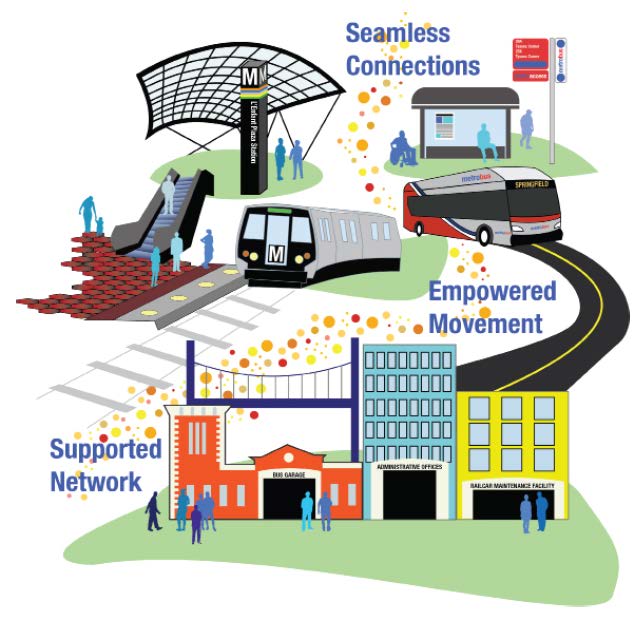Capital Program Overview
Metro is investing in system safety, reliability, and the region's economy through our Capital Improvement Program. On March 24, 2022, Metro's Board of Directors approved a 6-year, $12.4 billion capital program.
The capital program is designed to improve the safety of our rail, bus and paratransit system for all customers and employees, improve the customer experience, and keep the region's infrastructure in a state of good repair. The capital program does this by investing in new railcars, buses, and paratransit vehicles, improving stations and platforms, upgrading fire-suppression and emergency response systems, building new bus garages, replacing and repairing tracks, tunnels, bridges, signals, and more.
In spending local taxpayer dollars for capital projects, we're seeking to reinvest in the local economy, creating jobs and encouraging participation from disadvantaged, minority-owned, and small businesses in the region, while preparing the region for a more sustainable and equitable future.
Investment Principles
Funding Sources
Metro’s federal funding includes Passenger Rail Investment and Improvement Act (PRIIA) funding, as well as formula grants, most of which come through the Federal Transit Administration (FTA). PRIIA was reauthorized for FY2023 to provide $150 million annually in federal grants to Metro. Of this amount, $5 million has been designated for use by Metro’s Office of Inspector General, while the balance of funds continues to support the capital program. Federal PRIIA funds will continue to be matched by contributions from the District of Columbia, Maryland, and Virginia, whose support helps Metro address its safety and state of good repair capital needs.
Federal formula funding programs provide support for management of long-term assets and help to address the backlog of state of good repair projects.
In addition, Metro is eligible to compete for a variety of competitive grants each year, such as the U.S. Department of Transportation's Rebuilding American Infrastructure with Sustainability and Equity (RAISE) grant program, the FTA's Bus and Bus Facilities or Low- or No- Emission Vehicle grant programs, and the Department of Homeland Security's Transit Security Grant Program (TSGP).
Since 2010, Metro's jurisdictional partners affirmed their commitment to Metro's safety and state of good repair goals with the execution of a Capital Funding Agreement (CFA). The CFA provides the vehicle for jurisdictional matches to federal formula and discretionary grants and system performance funds - contributions over and above what is required to match federal grants.
In 2018, Metro's funding partners came together and established the agency's first dedicated capital funding source that provides $500 million each year, providing Metro the flexibility to plan critical capital projects on a long-term horizon and align necessary financing required to support the program.






